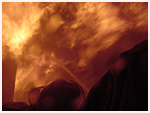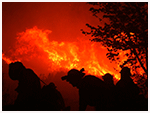« Blast From the Past 2000 – “104 Years of Service” | Home | LBFD Museum Rigs on Display »
City of Long Beach Improves Emergency Response Times by Answering Wireless 911 Calls for Service Made Within City Limits
By frhayes | March 12, 2009
After four months of rigorous testing, the City of Long Beach is improving emergency response times by directly answering all wireless 9-1-1 calls for service made within the city limits. Wireless 9-1-1 calls made along or near freeways are required by law to be answered by the California Highway Patrol (CHP).
Previously, Long Beach residents who dialed 9-1-1 from wireless phones experienced unnecessary delays because their calls were answered by a limited number of CHP dispatchers who had to screen the call, determine the caller’s location and then transfer the call to Long Beach Communications Center, where dispatchers would also have to query the wireless 9-1-1 call.
“The City of Long Beach is improving public safety by directly answering wireless 9-1-1 calls for service made within the city limits,” Mayor Bob Foster said. “By reducing the response times to emergency calls, Long Beach is another step closer to our goal of becoming the safest large city in California.”
“By answering local wireless 9-1-1 calls directly, City dispatchers are able to save an estimated 30 to 60 seconds per call, because CHP dispatchers are no longer involved in the process,” Police Chief Anthony Batts said. “In a life-threatening emergency, every second counts, and we are continuing to answer more than 92 percent of all 9-1-1 calls for service within 10 seconds, which is the state standard.”
In November 2008, the City of Long Beach began working with Los Angeles County, the State of California and the six major wireless carriers to phase in the responsibility of answering wireless 9-1-1 calls for service made within the City. The phase-in was recently completed after each cell site, or cell tower, was successfully tested to ensure that wireless 9-1-1 calls for service in its sector would be answered by City dispatchers.
“The City of Long Beach is committed to using technology to improve the services we provide to our residents and businesses,” Fire Chief David Ellis said.
In the event of a crime in progress or other emergency, the public should continue to call 9-1-1, regardless of whether they are using a traditional landline or wireless telephone.
“It’s important to remember that 9-1-1 calls are for immediate emergencies only,” Fire Chief Ellis said. “Dial 9-1-1 when lives are in danger, to report a fire, or if someone has a serious injury or medical condition. Never dial 9-1-1 for directory assistance, to ask for directions or to report a non-emergency.”
The CHP will continue answering wireless 9-1-1 calls made from the vicinity of freeways throughout California, regardless of city boundaries.
In a related development, the Long Beach City Council on Tuesday, March 10, authorized the City to join the Los Angeles Regional Interoperable Communications System (LA-RICS) Joint Powers Authority for the development of a regional, shared communications system for public safety first responders. LA-RICS is a modern, integrated, and wireless voice and data communications system that will support more than 34,000 public-safety first responders and local mission-critical personnel within the Los Angeles County region. The system will improve communications for both day-to-day incidents and during large-scale disasters.
In anticipation of LA-RICS, the City has already acquired approximately $5 million in handheld and vehicle-mounted radios and communication center upgrades, paid for from Homeland Security Grant Funds. These radios are currently in use on a daily basis by first responders, and will allow communication with other first responders from neighboring jurisdictions.
###
Deprecated: Function link_pages is deprecated since version 2.1.0! Use wp_link_pages() instead. in /home/firechan/public_html/blog/wp-includes/functions.php on line 6121
Topics: Uncategorized | 24 Comments »


